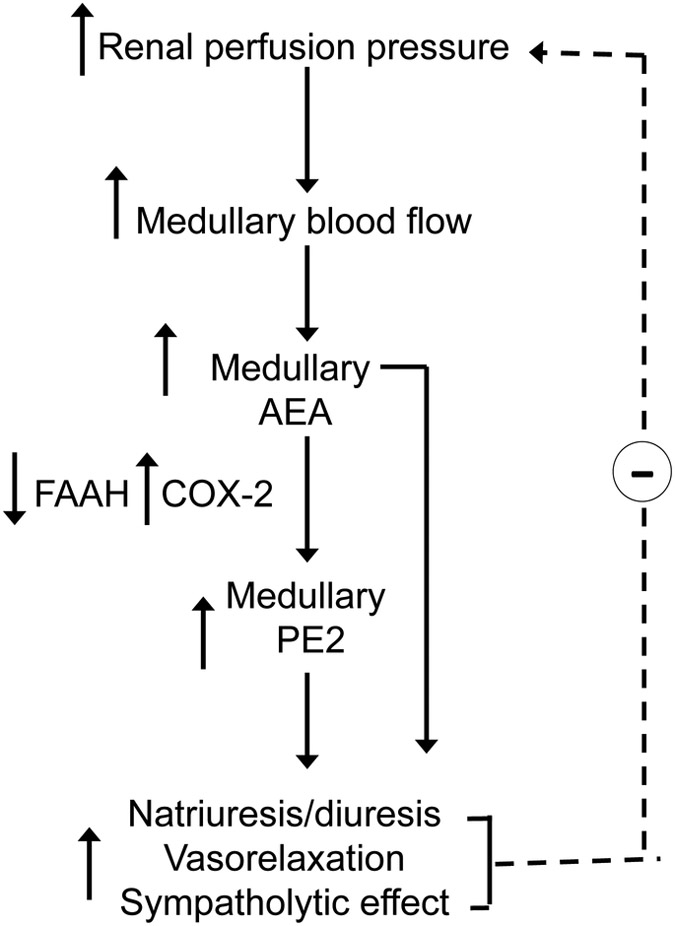Figure 4.
Proposed role of anandamide in the renal medulla. When renal perfusion pressure increases, medullary blood flow increases, and synthesis and release of AEA in the renal medulla is stimulated. The low FAAH-high COX-2 expression of the renal medulla favors the local release of AEA and/or its metabolism by COX-2 to prostamide E2 (PE2). AEA and/or PE2 could exert local apocrine effects or longer range endocrine effects by entering the circulation. Local apocrine effects include the tubular reabsorption of sodium and water resulting in lowered extracellular fluid volume and blood pressure. Systemic actions include vasorelaxation and an inhibitory effect on central sympathetic outflow to the heart and vasculature. The net effect of the three actions is lowering of arterial blood pressure and deceased renal perfusion pressure, restoring the system to homeostatic balance.

